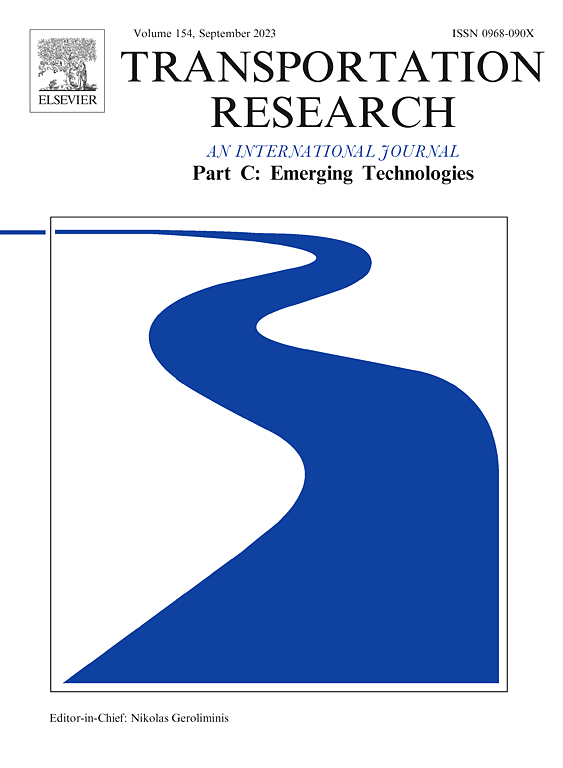Hierarchical prediction uncertainty-aware motion planning for autonomous driving in lane-changing scenarios
IF 7.6
1区 工程技术
Q1 TRANSPORTATION SCIENCE & TECHNOLOGY
Transportation Research Part C-Emerging Technologies
Pub Date : 2025-02-01
DOI:10.1016/j.trc.2024.104962
引用次数: 0
Abstract
Autonomous vehicles (AVs) are expected to achieve safe and efficient interactions with surrounding dynamic objects. Multi-lane driving scenarios, however, intensify the complexity of AV navigation, given the uncertainties associated with neighboring vehicles’ lane-changing intentions and the subsequent travel trajectories. Deep learning has demonstrated effectiveness in unraveling complex motion patterns, enabling stochastic predictions of intentions and trajectories. Nonetheless, reduced performance of deep-learning-based prediction may be observed in unseen driving environments owing to their “black-box” nature, potentially leading to incorrect decision-making in AV navigation in these environments. To address these challenges, this paper proposes a comprehensive AV planning framework that integrates hierarchical behavior prediction via deep learning with motion planning based on dynamic programming. A set of safety criteria is introduced within the motion planning module to accommodate hierarchical uncertainties in behavior patterns, adjustable based on the reliability of the prediction model and eschewing rigid distributional assumptions. An improved constrained iterative linear quadratic regulator is devised to handle the corresponding non-convex constraints and to offer efficient online solutions for AV navigation. Evaluations conducted with the INTERACTION and HighD datasets demonstrate the effectiveness of uncertainty-aware planning in enhancing AV safety performance.
求助全文
约1分钟内获得全文
求助全文
来源期刊
CiteScore
15.80
自引率
12.00%
发文量
332
审稿时长
64 days
期刊介绍:
Transportation Research: Part C (TR_C) is dedicated to showcasing high-quality, scholarly research that delves into the development, applications, and implications of transportation systems and emerging technologies. Our focus lies not solely on individual technologies, but rather on their broader implications for the planning, design, operation, control, maintenance, and rehabilitation of transportation systems, services, and components. In essence, the intellectual core of the journal revolves around the transportation aspect rather than the technology itself. We actively encourage the integration of quantitative methods from diverse fields such as operations research, control systems, complex networks, computer science, and artificial intelligence. Join us in exploring the intersection of transportation systems and emerging technologies to drive innovation and progress in the field.

 求助内容:
求助内容: 应助结果提醒方式:
应助结果提醒方式:


